 1962 - 1965
1962 - 1965 
 1962 - 1965
1962 - 1965 
 577th SMS, Altus AFB, Oklahoma
577th SMS, Altus AFB, Oklahoma 
My first Permanent Party assignment out of Tech School was at Altus AFB, Oklahoma. I was the Ballistic Missile Analyst Technician (BMAT) on Atlas-F ICBM Launch Crew R-43, from the time that the squadron went operational until it was deactivated. The Atlas-F was the first ICBM to be housed in a hardened underground silo. This was great duty. We pulled a 24 hour alert in the silo, and then we were off for two days. Of course, those "off" days were usually filled with training, but I was smart in those days, so I ate it up. That duty of kind spoiled me, and I decided to re-up in the USAF after four years. That was the second smartest move that I ever made. Below are photos of the 577th Strategic Missile Squadron patch, a series of shots of the Altas being raised for launch, and one of an actual night time launch from Vandenberg AFB.
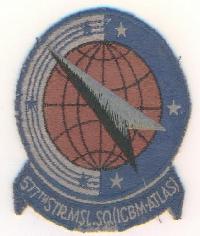
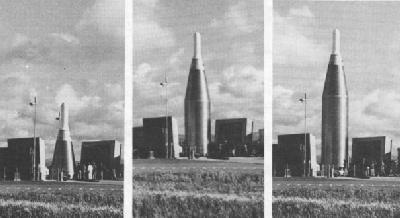
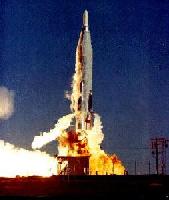
So here I was, a skinny (I have photos to prove it) 21 year old punk who had to grow up in a hurry. As an A2c (E-3), I was an integral part of an ICBM launch crew, and we were trained and ready to fling 10 mega-tons of whoop-ass at Ivan in just 10 minutes. 10 minutes is a long reaction time by today's standards, but in the 60s, it represented a major reduction in response time. Thankfully that never happened, but we came very close. My crew was on alert duty during the Cuban Missile Crisis on the night that we went to DEFCON 2. The only time that ever happened. In fact, the Missile Combat Crew Commander (MCCC) and I were on the console and decoded that Alert message from SAC Headquarters. It went something like: "Skybird, Skybird, this is Looking Glass with a Red Dot Two message". HOLLLEEE MACKERAL!!! This was the real thing. We then conducted countdown for our Atlas ICBM up to "Commit". That means that we were just one more button, and two minutes away from WWIII. You could have cut #10 washers off of my sphincter for a month after that experience. I guess the world will never really understand how close we came that night. We actually made plans to bring our families out to the silos for their safety.
Below is a pic of me at home on my first leave as a lean, mean, SAC trained killin' machine.

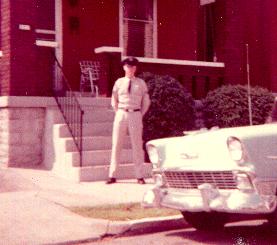

The Missile Combat Crew consisted of two officers and three enlisted men. Our 24 hr tours on alert were pressure-packed. They started with a chopper ride to the site, followed by a change-over briefing, and then continous inspection of the LCC and the silo. There were eight levels in the silo which were all suspended by huge springs for shock protection. For some reason I loved this duty. Maybe it was because I knew my job forward and backward, and it felt good to be so confident. ORIs, QC visits, "The general is coming" alerts, Ivan, etc., - - - - No probelm. Bring 'em all on!
A launch sequence consisted of activating and testing all of the onboard electronics, aligning the INS, transferring 25,000 gallons of LOX onto the missile, and then raising it up out of the silo to the launch postion. The RP-1 (kerosene) was stored on board the missile, so only the LOX had to be transferred. Handling LOX is a very dangerous task. If the LOX mixed with any hydrocarbon, you had a "bomb". The LOX was stored in a special tank on level 8 of the silo.
We ate and slept in the Launch Control Center. There were bunks, kitchen facilities, showers. All of the comforts of home. HA!!! Below are photos of the LCC, the panel which controlled the complete launch process, and the "GI" bunk area.
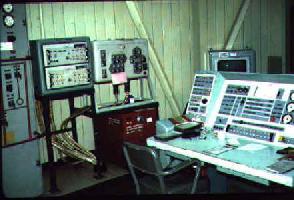

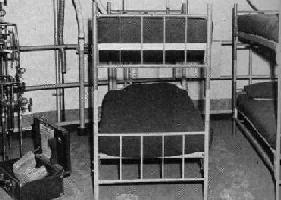
Here is an artist's sketch of what the LCC looked like. There were two levels. The living areas were on level 1. The Launch console was on level 2. The tunnel off to the right in the sketch is a tunnel which led through blast doors into the silo. The LCC and the silo were suspended from huge springs to help absorb the shock of a near direct hit. Access to the silo was through two very sturdy blast doors. These were intended to protect the crew from catastrophies in the silo. This design came in handy. We blew one up (Frederick silo) at Altus. 25,000 gallons of LOX and RP-1 made for one big bang!

Here is an artist's sketch of the LCC and missile silo combo cross section(left), and a silo scan from the General Dynamics pamphlet which the contractor passed out(right).
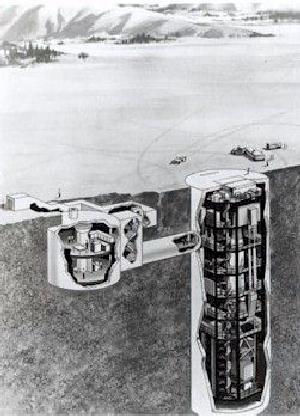
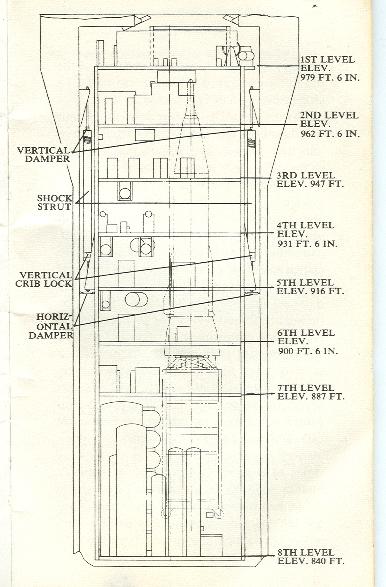
Each silo was completely self contained. We could run off of commercial power, but we had two monster diesel generators in each silo. Silo levels 5 and 6 were plum full of diesel generators. During all launch or maintenance activity which required lifting the missile on the elevator, both diesels were run in parallel to carry the load. The paralleling was accomplished manually from a panel in the LCC. Below are photos of one of the diesels, the missile from inside the Missile Enclosure Area (MEA), and the RV sitting on top ready to take care of Ivan.
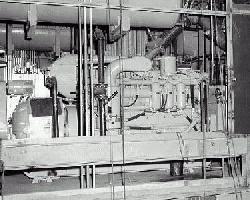

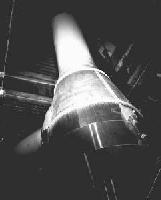
The 12 sites around Altus AFB were very spread out. They were separated by miles. One of them (Fargo) was actually in Texas. The contractors carved the sites and silos out of the surrounding farm land. The pics below show an aerial of one of the sites, an "F" being delivered to the base via a C-133 aircraft. This aircraft was built just to deliver Altas missiles from the plant. Next is a photo inside of the General Dynamics Atlas plant in it's hay-days. The last pic shows an "F" with the launch platform "up and locked", just one step from launch. The steam or smoke coming from the missile was from the liquid oxygen boil-off. The LO2 boiled off continuously at ambient temperatures. There was a boil-off valve provided to control the pressure in the LO2 tank.
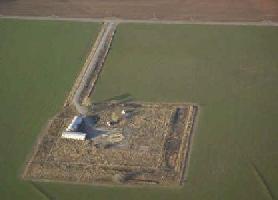
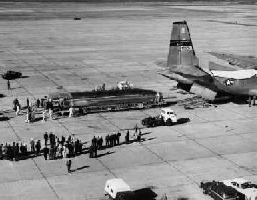
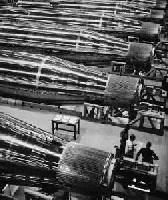
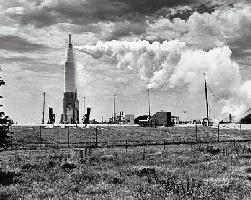
Item of interest: In 1964, while I was at Altus AFB, the USAF selected certain AFSCs and offered helicopter flight training and a Warrant Officer rating to those who would volunteer. Guess what the big need was for chopper pilots in 1964 - - - - Well, I volunteered, but because my vision was already degraded to 20/200 in my right eye, I was refused. Five guys from Altus made the cut, finished chopper pilot training, and were sent to that far off, unheard of tropical paradise called Vietnam. All five of them died over there. So, I guess we can say that my bad eyesight saved my life. Odd twist, eh??
In 1965, the DOD decided to shut down all of the Atlas bases. Most of us were retrained into aircraft related jobs. I was sent to Keesler AFB for cross training Tech school. I had made A1c (E-4) at Altus.